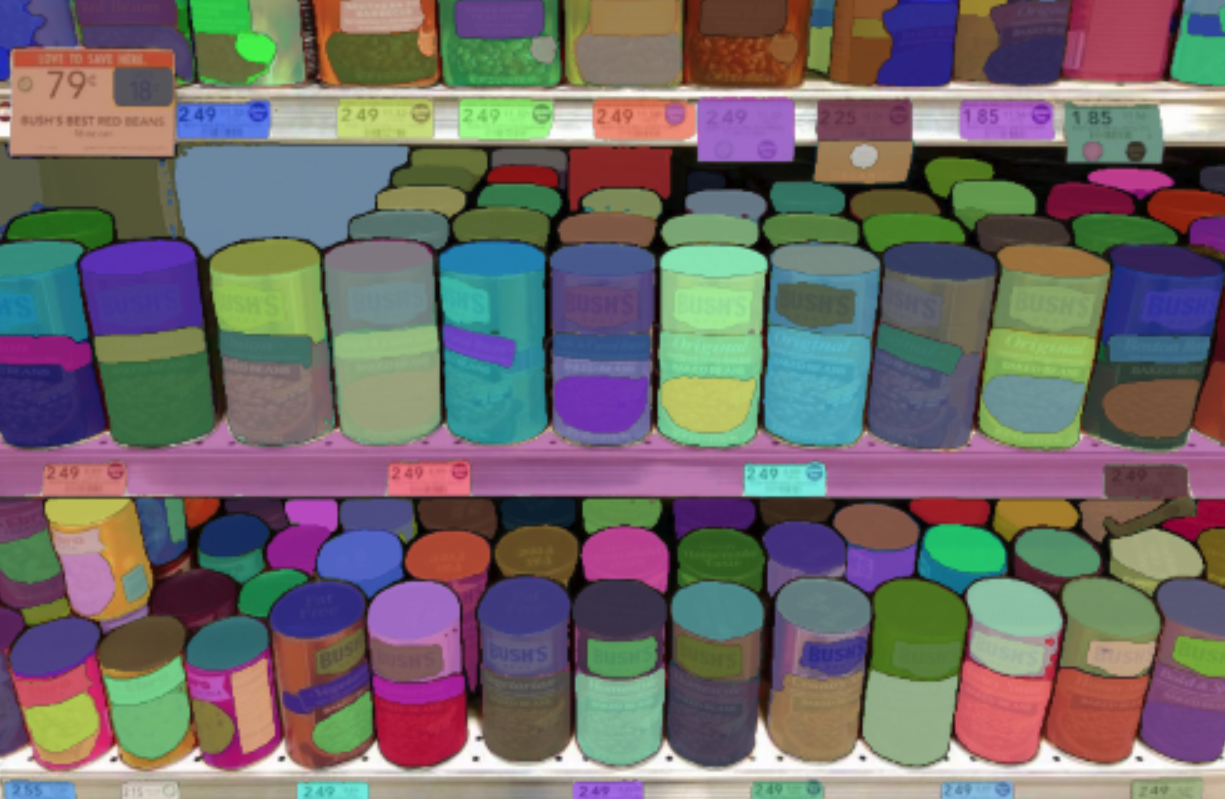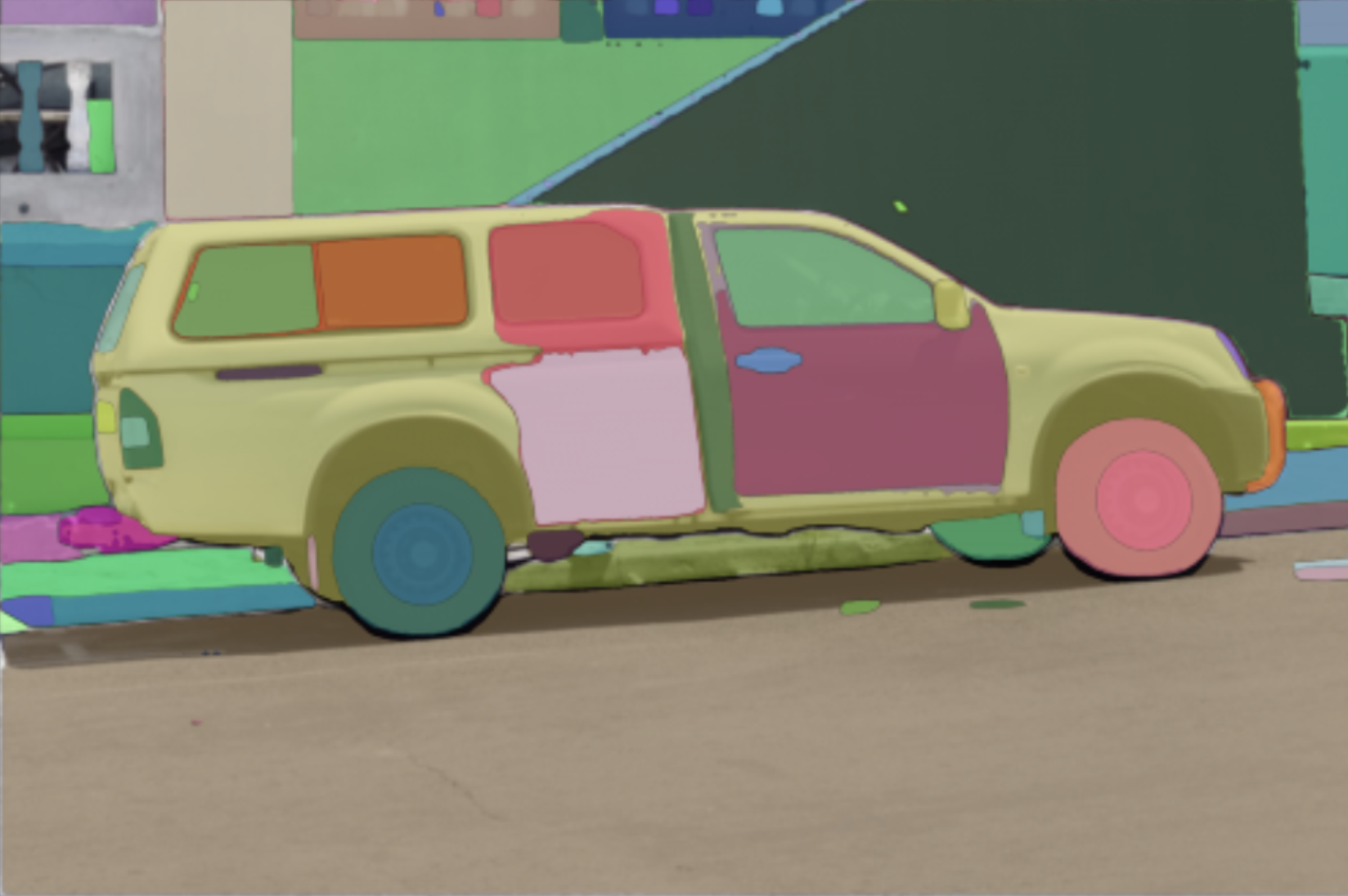🚀 Segment Anything Model (SAM) - ViT Large (ViT-L) version
The Segment Anything Model (SAM) can generate high - quality object masks from input prompts like points or boxes. It can also generate masks for all objects in an image. Trained on a large - scale dataset, it shows strong zero - shot performance on various segmentation tasks.
🚀 Quick Start
This section provides a high - level overview of the Segment Anything Model (SAM) and its key features.
Key Features
- Produces high - quality object masks from input prompts.
- Can generate masks for all objects in an image.
- Strong zero - shot performance on a variety of segmentation tasks.
Visual Examples
Abstract
We introduce the Segment Anything (SA) project: a new task, model, and dataset for image segmentation. Using our efficient model in a data collection loop, we built the largest segmentation dataset to date (by far), with over 1 billion masks on 11M licensed and privacy respecting images. The model is designed and trained to be promptable, so it can transfer zero - shot to new image distributions and tasks. We evaluate its capabilities on numerous tasks and find that its zero - shot performance is impressive -- often competitive with or even superior to prior fully supervised results. We are releasing the Segment Anything Model (SAM) and corresponding dataset (SA - 1B) of 1B masks and 11M images at [https://segment - anything.com](https://segment - anything.com) to foster research into foundation models for computer vision.
Disclaimer: Content from this model card has been written by the Hugging Face team, and parts of it were copy pasted from the original [SAM model card](https://github.com/facebookresearch/segment - anything).
✨ Features
The SAM model consists of the following key components:
- VisionEncoder: A VIT - based image encoder that computes image embeddings using attention on image patches with Relative Positional Embedding.
- PromptEncoder: Generates embeddings for points and bounding boxes.
- MaskDecoder: A two - ways transformer that performs cross - attention between image embeddings and point embeddings.
- Neck: Predicts output masks based on the contextualized masks produced by the
MaskDecoder.
💻 Usage Examples
Basic Usage - Prompted - Mask - Generation
from PIL import Image
import requests
from transformers import SamModel, SamProcessor
model = SamModel.from_pretrained("facebook/sam-vit-large")
processor = SamProcessor.from_pretrained("facebook/sam-vit-large")
img_url = "https://huggingface.co/ybelkada/segment-anything/resolve/main/assets/car.png"
raw_image = Image.open(requests.get(img_url, stream=True).raw).convert("RGB")
input_points = [[[450, 600]]]
inputs = processor(raw_image, input_points=input_points, return_tensors="pt").to("cuda")
outputs = model(**inputs)
masks = processor.image_processor.post_process_masks(outputs.pred_masks.cpu(), inputs["original_sizes"].cpu(), inputs["reshaped_input_sizes"].cpu())
scores = outputs.iou_scores
Among other arguments to generate masks, you can pass 2D locations on the approximate position of your object of interest, a bounding box wrapping the object of interest (the format should be x, y coordinate of the top right and bottom left point of the bounding box), a segmentation mask. At this time of writing, passing a text as input is not supported by the official model according to [the official repository](https://github.com/facebookresearch/segment - anything/issues/4#issuecomment - 1497626844).
Advanced Usage - Automatic - Mask - Generation
The model can be used for generating segmentation masks in a "zero - shot" fashion, given an input image. The model is automatically prompted with a grid of 1024 points which are all fed to the model.
from transformers import pipeline
generator = pipeline("mask-generation", device = 0, points_per_batch = 256)
image_url = "https://huggingface.co/ybelkada/segment-anything/resolve/main/assets/car.png"
outputs = generator(image_url, points_per_batch = 256)
To display the image:
import matplotlib.pyplot as plt
from PIL import Image
import numpy as np
def show_mask(mask, ax, random_color=False):
if random_color:
color = np.concatenate([np.random.random(3), np.array([0.6])], axis=0)
else:
color = np.array([30 / 255, 144 / 255, 255 / 255, 0.6])
h, w = mask.shape[-2:]
mask_image = mask.reshape(h, w, 1) * color.reshape(1, 1, -1)
ax.imshow(mask_image)
plt.imshow(np.array(raw_image))
ax = plt.gca()
for mask in outputs["masks"]:
show_mask(mask, ax=ax, random_color=True)
plt.axis("off")
plt.show()
📚 Documentation
This section provides detailed information about the model's architecture and how it works.
Model Architecture
The SAM model is composed of 3 main modules:
- The
VisionEncoder: A VIT - based image encoder that uses attention on image patches to compute image embeddings. It employs Relative Positional Embedding.
- The
PromptEncoder: Generates embeddings for points and bounding boxes.
- The
MaskDecoder: A two - ways transformer that performs cross - attention between the image embedding and the point embeddings, and vice - versa.
- The
Neck: Predicts the output masks based on the contextualized masks produced by the MaskDecoder.
📄 License
This model is licensed under the Apache - 2.0 license.
📚 Citation
If you use this model, please use the following BibTeX entry.
@article{kirillov2023segany,
title={Segment Anything},
author={Kirillov, Alexander and Mintun, Eric and Ravi, Nikhila and Mao, Hanzi and Rolland, Chloe and Gustafson, Laura and Xiao, Tete and Whitehead, Spencer and Berg, Alexander C. and Lo, Wan - Yen and Doll{\'a}r, Piotr and Girshick, Ross},
journal={arXiv:2304.02643},
year={2023}
}


